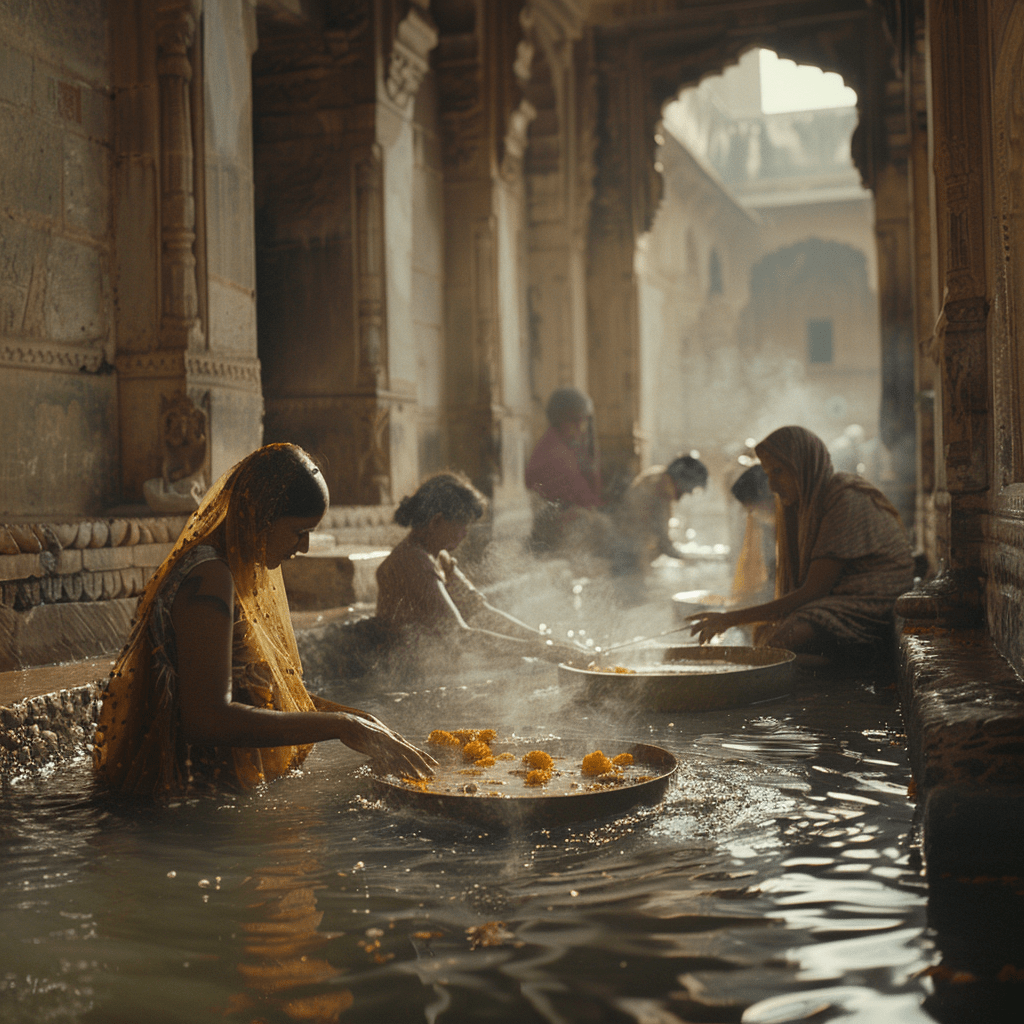While stepping into a hot shower might seem like a universal experience, a closer look reveals a fascinating tapestry of bathing rituals practiced across cultures. From ceremonial cleansings to communal saunas, bathing practices goes beyond hygiene, serving as a cornerstone of individual and societal well-being. Let's embark on a journey to discover how different cultures approach bathing, expanding our understanding of self-care and its deep-rooted significance.
1. Hammams: A Steamy Escape in the Middle East and North Africa
Step into a traditional hammam, a communal bathhouse in the Middle East and North Africa, and you'll enter a world of steam, scrubbing, and rejuvenation. Hot, moist air envelops the bather, followed by vigorous exfoliation with a special mitt, removing dead skin and promoting circulation. Bathing in hammams transcends mere hygiene; it's a social experience, fostering community and relaxation.
2. Onsen: Japan's Geothermal Retreats
Imagine sinking into steaming volcanic pools surrounded by picturesque landscapes. Onsen, Japan's natural hot springs, offer a unique bathing experience. Immersed in mineral-rich waters, bathers find solace and revitalization. Etiquette dictates thorough cleansing before entering the shared pools, highlighting the emphasis on communal respect and purity.
3. Banya: Ritual Steam Cleansing in Russia
Russian bathhouses, or banyas, offer an intense heat experience. Wooden saunas infused with herbal steam cleanse the body and spirit. Traditionally, birch branches are used for whipping, stimulating circulation and releasing tension. Banyas are often followed by plunges into cold water, promoting invigoration and resilience.
4. Temazcal: A Mayan Purification Ceremony
Step into a temazcal, a dome-shaped stone structure used by indigenous cultures in Mesoamerica. Volcanic rocks heated outside are brought inside, generating intense heat and steam. Participants engage in chanting and prayers, creating a deeply spiritual and cleansing experience. Temazcal serves not only as a physical cleanse but also as a purification ritual for body and soul.
5. Ganges River Bathing: A Sacred Immersion in India
For Hindus, bathing in the Ganges River is not just a cleansing act, but a sacred pilgrimage. Millions immerse themselves in the holy waters, believing it washes away sins and brings spiritual renewal. This ritual underscores the deep connection between physical cleanliness and spiritual well-being in Indian culture.
Understanding the "Why" Behind the "How"
Exploring these diverse bathing practices reveals the profound cultural significance associated with them. Hygiene is intertwined with spiritual beliefs, social interactions, and traditional medicine. Each ritual reflects unique values and philosophies, offering us valuable insights into how different cultures prioritize well-being.
Beyond the Surface: Expanding Our Perspective
By appreciating these diverse bathing practices, we challenge our own assumptions about hygiene and self-care. We gain a richer understanding of how cultural values shape our perceptions and practices. This exploration encourages us to embrace alternative approaches and broaden our personal definitions of self-care, leading to a more holistic and meaningful understanding of well-being.
So, the next time you step into the shower, remember that it's more than just a daily routine. It's a practice rooted in cultural traditions and personal values, shaping our relationship with cleanliness and well-being. By appreciating the diverse tapestry of bathing practices around the world, we can enrich our own self-care rituals and embrace a wider perspective on personal health and happiness.

